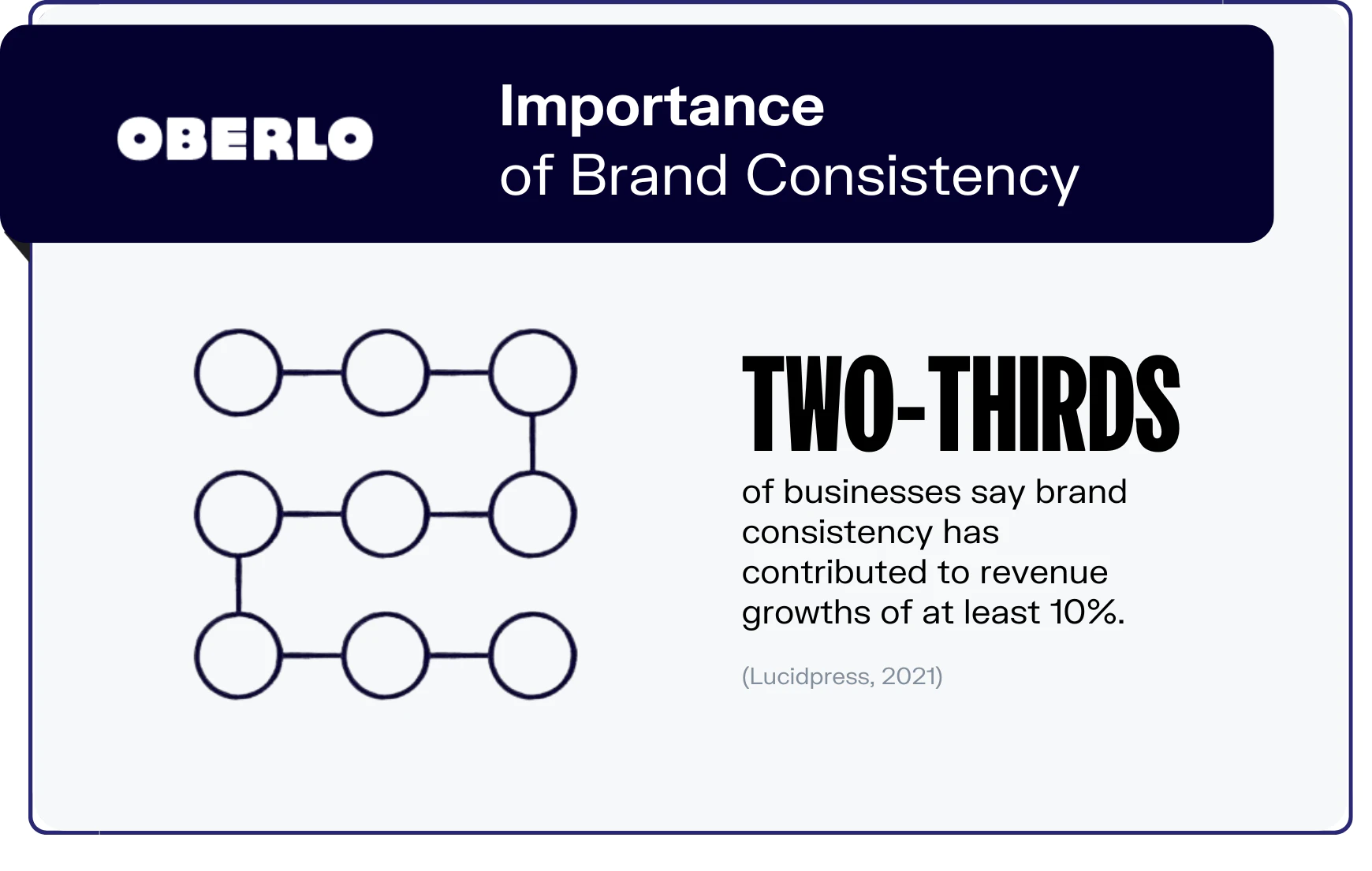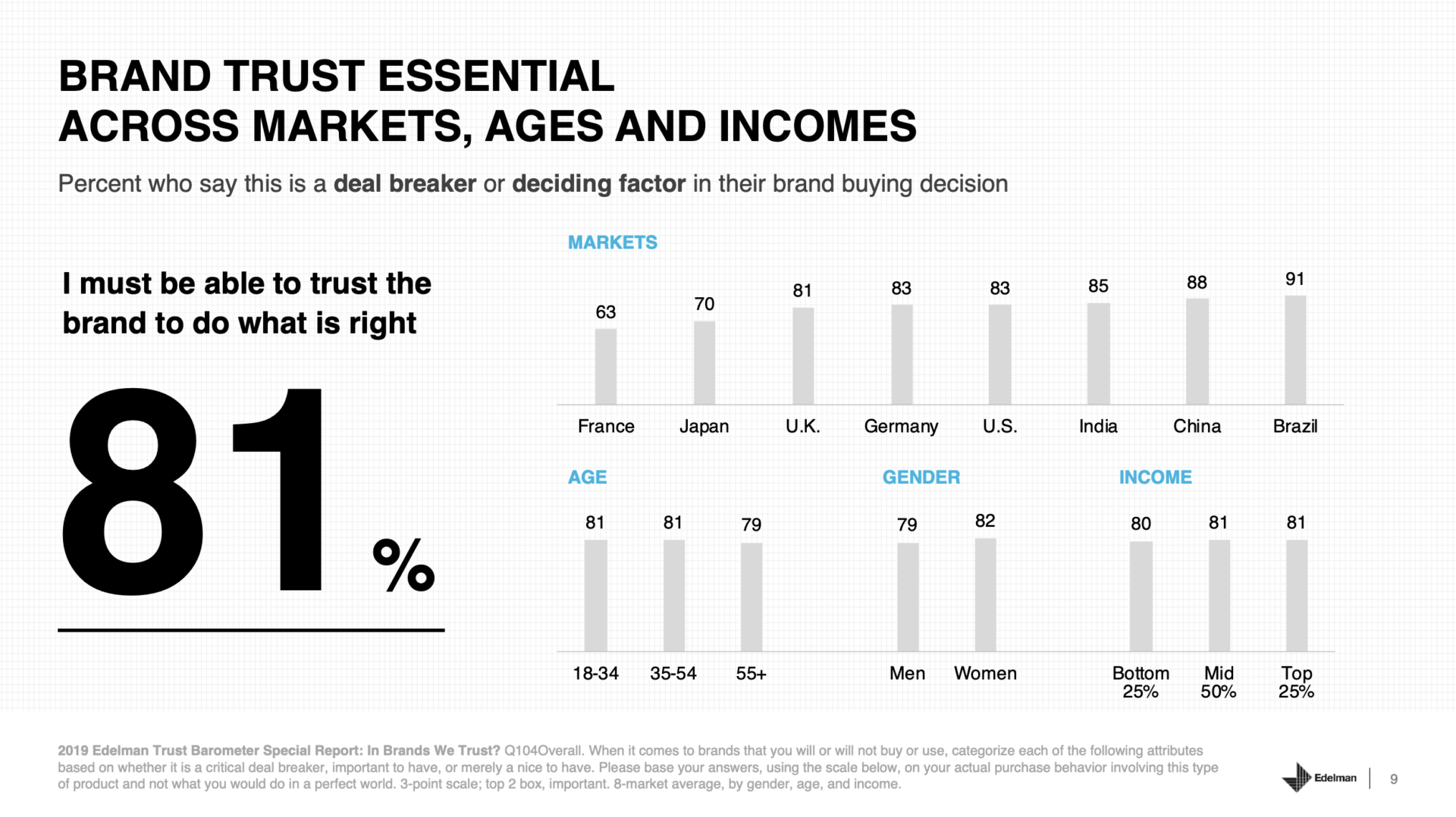Execute on These 21 eCommerce Strategies To Increase DTC Brand Customers
In a world where DTC Brands are becoming ubiquitous in the market…
With customers demanding more accountability and transparency from brands…
There is certainly an extra bit of pressure on your shoulders.
Fortunately for those of us that have taken the plunge already, it’s possible to thrive as a direct to consumer brands in this new eCommerce era.
We’ve compiled strategies that will help you survive and thrive.
1) Align Content Production With Your DTC Brand Customers
Content is king for successful DTC brands, but which type should you be focusing on?
Screen capture videos may be good enough for some demographics while educational blogs might work better for others.
The brand’s target demographic will help guide which content is best for producing.
2) Think, “Open And Transparent”
As a direct-to-consumer brand, the business may not have to worry about maintaining stock levels of a certain product…
As there are plenty of customers ordering in bulk.
This means that keeping your customers updated on your progress can be challenging when you’re unable to do so on a regular basis.
| For example:
If your brand produces a limited edition product…
And labels it as something else along the way…
People will be confused by the lack of updates regarding its release date or production status.
3) Design For Your Customers And Not For Yourself
There’s no better way to get onboard with this new marketing method than by answering the question…
“What do my customers want?”
The brand’s target demographic will help identify what products are needed.
Which again, can then be used to direct content production efforts.
However…
One subtle, but effective way, to create relationships with your customers is by making their problems your problems.
The brand should be able to replicate the pain points of its customers and work toward fixing them when redesigning and/or creating new products.
4) Give Your Customers A Voice In The Product Creation Process
The DTC business model was built on innovation.
The brand should always be implementing new solutions into its products that will benefit customers.
Giving consumers the opportunity to voice which problems they’ve been experiencing.
With your eCommerce products, make the brand an active participant in their lives…
As well as providing them with a sense of accountability for these issues.
5) Consider Consumer Feedback When Redesigning
You’ll have a unique opportunity to test and implement new ideas across a large customer base.
However…
It’s vital to do so responsibly.
As it’s easy for customers to feel lost if there’s too much product redesign or iteration occurring at one time.
Lower the friction level.
By creating new products to help solve specific problems, the customer will know that they’re receiving a product that actually solves their problem.
And not just a reformulation of the same product.
6) Validate Your Brands’ Business Model
eComm businesses are often focused on providing customer service in addition to content.
This marks a drastic shift from the traditional brick-and-mortar premise where the business had zero concern for ‘content’…
Or even knew what that was!
It’s important to adjust the balance of resources between customer service and content production.
Especially if there’s not enough human labor to answer inquiries…
While generating high levels of production for videos and other media channels.
7) Understand The Importance Of Consistency
Consistency is often viewed as one of the most important pillars of the content marketing process.
DTC Brand Customers will get bored if a new product is released and it doesn’t have similar components or quality as its predecessor.
You should be able to explain why a new product is being produced in order to help alleviate any confusion about what they’re getting.
8) Create An Internal Team To Help Troubleshoot Issues
Brands are relying on their customers more than ever before.
So it only makes sense that you create and employ internal teams…
This way you’ll be better suited to meet your customers needs and expectations.
This can be helpful in optimizing your efforts.
By receiving suggestions and feedback from your fans & followers.
The process of developing new products should also rely on customer feedback, for unlocking new ideas.
If a customer has been experiencing issues with a certain item…
It might make sense to employ other customers to voice their opinion on the newly introduced product…
And incorporate their thoughts into upcoming changes.
9) Partner with a third-party marketing agency
Businesses will find that partnering up with an outsourced marketing agency will be invaluable.
As you can leverage the creation of content…
AND, the fulfillment of orders to free up resources among other things.
You may also benefit from hiring someone to create videos on your channels, while you focus on the fulfillment side.
Marketing agencies are tuned into the nuances of eComm DTC brands and will be able to provide additional services related to strategy.
That might not have otherwise been possible for the DTC brands in-house.
10) Consider selling additional products in a bundle
While it’s easy to sell one product, it’s much harder to convince customers that buying multiple items is worth their time.
However…
Bundling multiple products can help alleviate barriers such as shipping costs and production logistics.
By giving customers a discount rate for buying more than one item at once.
Also, a bundle can provide satisfaction to customers by giving them a sense that they’re making a smart investment.
11) Allow customers to contribute to campaigns
The easiest way for DTC businesses to create content is by allowing customers to directly contribute and/or offer suggestions.
| For example:
You might have an acting contest where it uses customer video submissions to create content.
Or run a Kickstarter campaign where you ask followers for feedback on which products should be incorporated into the line
Then utilize this data throughout the implement process.
12) Always be thinking about the future
The future of retention used in direct-to-consumer strategies is often viewed as another cash cow for the business.
Due to an increase in sales beyond the initial novelty that attracted customers in the first place.
The needs of customers can change over time, and it’s important for you to invest in ways that allow you to better serve your customers.
The rate of change should be factored into the decision-making process when creating new products…
Especially, if there’s no precedent on how customers will receive them.
You’ll need a sustainable business model, as you’ll be relying on your email subscriber segments to generate revenue.
The key to creating a sustainable DTC brand business model — is ensuring that the customers you have are engaged and returning.
13) Create content for all of your products
The easiest way to keep customers engaged and coming back for more is to provide them with free perks…
Or additional information, that is exclusive to your brand.
This might include special access to behind-the-scenes videos or backstage looks at upcoming projects, as a part of their email subscriptions.
This type of content can hold audiences’ attention because it’s authentic and informative, as it’s relevant to the goals of your brand.
14) Create stronger brands for customers to identify with
Create a sense of belonging and identification between your brand and your products.
Marketing agencies, such as ourselves, may include reference or logos, on our website to showcase clients we’ve worked with.
Or even adding case studies and success stories as a part of our monthly newsletters.
DTC branding is created by, creating an opinion, following, or voice within the market that is tied into your brand.
What do people say about you behind your back?
That is your brand.
15) Create exclusive products for customers
There’s nothing more engaging than having something that only your customers can have access to.
So it’s important for you to think about how you can keep followers engaged by offering exclusivity to them.
The Columbia River Yacht Club created a mailing list for select customers that offered them early access and exclusive information about upcoming tours and cruises.
Grunt Style offers exclusive, limited edition, t-shirts to it’s subscription members.
These are simple strategies DTC Brands can execute on, that go a long way in the customers eyes.
16) Create a consistent voice across platforms
Use Social Media to actively engage with your customers in order to build brand awareness and create a following of users.
Social media gives you the opportunity to create a unique identity that will be remembered among the many different products that they offer.
For example:
Homage, an online brand known for its masculine and sporty clothing apparel, uses its Instagram account (Homage) as a way to communicate daily with their fans.
By posting engaging and funny sports content that has little to do with their apparel…
But a lot to do with their audience…
They’re effectively building a community of fans to sell to, with little cost to make it happen.
17) Use social media to engage your customers
Platforms are an integral part of your DTC brands’ marketing efforts…
And you want their customers to feel a sense of community with the brands they choose to purchase from.
| Similar to the example above…
The more that customers feel a sense of belonging with a company.
The higher likelihood that they will purchase its products in the future.
Engaging on social is one way you’re able to build this bond between your products and people that you serve.
18) Target an audience that is influential in your industry
The DTC Brands business model depends on social media to build and maintain relationships with customers…
| Always remember that.
While social media can be a cost-effective way for you to increase awareness…
It does require you to adjust your tactics based on the type of audience that you serve.
Customers who spends more on beauty products are more likely to share the brands that they buy from via social media.
Whereas, customers who spend more on sports products are more likely to share this information in-person (word of mouth).
This allows DTC brands to find people that are influential to their market…
And target them specifically, with ads, in order to create awareness among potential evangelists.
19) Plan your post schedule carefully
When creating content, you’ll want to plan your posts well in advance of when they’re actually going to be posted.
The reason for this is because social’s often flooded with other posts that compete with the ones that you’ll want to promote.
If you want to post a special offer for its customers, you’ll most likely need to promote it several days before the actual offer goes live.
This helps prevent customers from being fooled by fake offers..
And promotes legitimacy and advocacy among those who engage with your promotion.
| Make them feel special.
20) Make the customer feel like they are part of the process
Brands are constantly creating new products…
So it’s important for them, and you, to make you customers feel like they were part of this process themselves.
For example:
Aosom recruits its customers for feedback in order to gather opinions from people who have already shown an interest in these types of products.
This way, the brand is able to validate their products and maintain a sense of transparency with customers.
21) Create a brand that is memorable and easy to recognize
It’s important for you to make sure that you social media accounts are memorable and easy to recognize.
This way you can generate more engagement from your target audiences.
It’s also crucial for you to use the platforms as a way to connect with customers on a personal level.
Just like Grunt Style using its strengthened relationship, between customers + brand, to establishing a sense of exclusivity that is valuable among followers.
In addition, paid social is a great way to build relationships with customers and increase loyalty to the brand.
While injecting some ad dollars to amplify your current social strategies.
If a customer interacts with your brand through paid ads, they will be considered as a “fans” of the brand.
This increases the likelihood that they will purchase from your product lines again in the future.
This also increases your organic posts threshold to build awareness, as the platform see’s you as being relevant toward your audience.
Social media also have viral potential, to bring awareness to products…
That otherwise, would not receive much attention in traditional marketing channels like television and radio advertisements or print ads.
Harnessing The Power Of Social Media Marketing
Over the past several decades, DTC brands have learned how to use social media in order to promote their products and companies effectively.
In terms of generating awareness for their brands, DTC businesses especially do it well.
92% of DTC Brands post daily on social media platforms such as Twitter, Facebook, Instagram and YouTube.
Scientific Dissertation from Walden University, on “Social Media Marketing Strategies for Increasing Customer
Engagement“
These primary platforms consist of:
- YouTube.
Overall, these brands produce, on average, around 4 posts per day.
This creates a sense of affinity that is valued by their audience and is crucial to building a community in the market.







1 thought on “21 Ecommerce Strategies To Implement For Your DTC Brands”